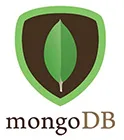`I am trying to write an aggregator query for the complex DB document below, ideally i am looking for creating multiple streams from the given activities set, identifying the parent child hierarchy and recursively processing the input document.
Title: Aggregator Query for Identifying Workflow Streams in Hierarchical Document
Body:
I’m trying to write an aggregation query in MongoDB to process a complex document representing a set of activities with parent-child relationships. The goal is to identify multiple workflows (streams) from this data.
Input Document:
[
{
"id": "123",
"activities": [
{
"activityId": "A1",
"children": [
{
"activityId": "A2"
},
{
"activityId": "A7"
}
]
},
{
"activityId": "A2",
"children": [
{
"activityId": "A3"
}
]
},
{
"activityId": "A3",
"children": [
{
"activityId": "A4"
}
]
},
{
"activityId": "A4",
"children": [
{
"activityId": "A5"
}
]
},
{
"activityId": "A4",
"children": [
{
"activityId": "A6"
}
]
},
{
"activityId": "A6",
"children": []
},
{
"activityId": "A5",
"children": []
},
{
"activityId": "A7",
"children": []
},
{
"activityId": "B1",
"children": [
{
"activityId": "B2"
},
{
"activityId": "B3"
}
]
},
{
"activityId": "B2",
"children": []
},
{
"activityId": "B3",
"children": []
},
{
"activityId": "C1",
"children": []
}
]
},
{
"id": "897",
"activities": [
{
"activityId": "X1",
"children": [
{
"activityId": "X2"
},
{
"activityId": "X7"
}
]
},
{
"activityId": "X2",
"children": [
{
"activityId": "X3"
}
]
},
{
"activityId": "X3",
"children": [
{
"activityId": "X4"
}
]
},
{
"activityId": "X4",
"children": [
{
"activityId": "X5"
}
]
},
{
"activityId": "X4",
"children": [
{
"activityId": "X6"
}
]
},
{
"activityId": "X6",
"children": []
},
{
"activityId": "X5",
"children": []
},
{
"activityId": "X7",
"children": []
},
{
"activityId": "Y1",
"children": [
{
"activityId": "Y2"
},
{
"activityId": "Y3"
}
]
},
{
"activityId": "Y2",
"children": []
},
{
"activityId": "Y3",
"children": []
},
{
"activityId": "Z1",
"children": []
}
]
}
]
** Aggregator query: **
db.collection.aggregate([
{
"$match": {
"activities.children": []
}
},
{
"$graphLookup": {
"from": "collection",
"startWith": "$activities.activityId",
"connectFromField": "activities.activityId",
"connectToField": "activities.children.activityId",
"as": "workflowStreams"
}
},
{
"$set": {
"workflowStreams": {
"$setUnion": [
[
"$activities.activityId"
],
"$workflowStreams.activities.activityId"
]
}
}
},
{
"$group": {
"_id": "$id",
"workflowStreams": {
"$push": "$workflowStreams"
}
}
}
])
** Expected Response **
[
{
"id": "123",
"workflowStreams": [
[
"A1",
"A2",
"A3",
"A4",
"A6"
],
[
"A1",
"A2",
"A3",
"A4",
"A5"
],
[
"A1",
"A7"
],
[
"B1",
"B2"
],
[
"B1",
"B3"
],
[
"C1"
]
]
},
{
"id": "897",
"workflowStreams": [
[
"X1",
"X2",
"X3",
"X4",
"X6"
],
[
"X1",
"X2",
"X3",
"X4",
"X5"
],
[
"X1",
"X7"
],
[
"Y1",
"Y2"
],
[
"Y1",
"Y3"
],
[
"Z1"
]
]
}
]

 Question posted in
Question posted in 

2
Answers
The most seamless way to reuse the solution from your previous question I can think of is to create a database view to "flatten" the activities entries into individual documents. You can then perform the same query as before.
Then, you can reuse the same solution on the view.
I would like to reemphasize the importance of refactoring your schema as in the comments. Currently, you are prone to a potential 16MB single document size limit breach, various performance issues and query complexity.
This query should produce a response similar to the one expected: